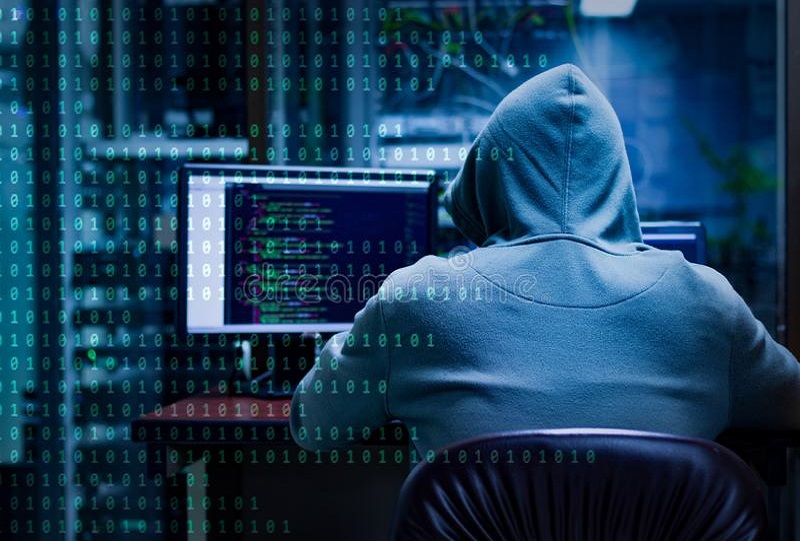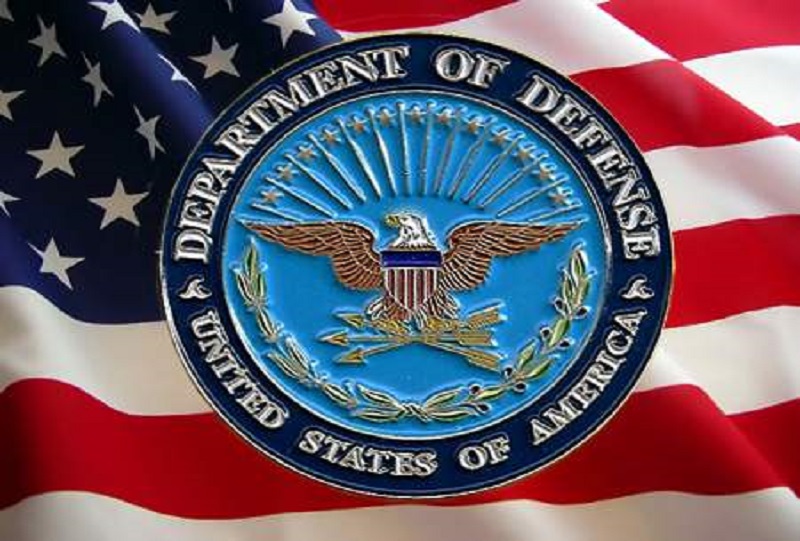News (4)
Cybersecurity Job Statistics
The demand for cybersecurity professionals continues to rise along with the rates of attacks and increases in cybersecurity budgets. The imbalance of the amount of skilled cybersecurity workers along with the high demand to fill cybersecurity positions has caused a cybersecurity skills shortage. By 2021, there wil be 3.5 Million unfilled cybersecurity jobs globally. Ref. VARONIS Below are some facts about the cyberurity jobs statistics: 50% of large enterprises (with over 10,000 employees) are spending $1 million or more annually on security, with 43% spending $250,000 to $999,999, and just 7% spending under $250,000. (Cisco) 82% of employers report a shortage of cybersecurity skills. (ISSA) 61% of companies think their cybersecurity applicants aren’t qualified. (ISSA) The cybersecurity unemployment rate is 0% and is projected to remain there through 2021. (CSO Online) It’s predicted that by 2021, 100% of large companies globally will have a CISO position. (Cybersecurity Ventures) By 2021, it’s projected that there will be 3.5 million unfilled cybersecurity jobs globally. (Cybersecurity Ventures) Information Security Analysts job positions in the US are expected to grow 32% from 2018–28. (Bureau of Labor Statistics) Computer Network Architect job positions in the US are expected to grow 5% from 2018–28. (Bureau of Labor Statistics) Computer Programmer job positions in the US are expected to decline 7% from 2018–28. (Bureau of Labor Statistics) Since 2016, the demand for Data Protection Officers (DPOs) has skyrocketed and risen over 700%, due to the GDPR demands. (Reuters) 500,000 Data Protection Officers are employed (IAAP) 66% of cybersecurity professionals struggle to define their career paths (ISSA) 60% of cybersecurity professionals aren’t satisfied with their current job (ISSA) Are you interested in entering the field of cybersecurity? If yes, now is the time as the job field and average salary is only projected to grow.
Protecting Patient Data in UK
StegoTime provides an excellent, simple, flexible solution to protect your patient data, while it is stored on your computer, local server, or cloud; or while it is exchanged across the Internet. Simpley, use Stegotime to hide the patient data in an image of your choice (e.g., your patient photo), authroize your patient or any other person who is legally authroized to access this data, and store it or send it to them by email. You can be sure that no one can disclose the data except you, your paient, and those whom you authroized. As a doctor you have an ethical, legal and contractual duty to protect patient confidentiality. Under data protection law, those responsible for patient data are legally obliged to store it securely and protect it from unauthorized or unlawful processing. The General Medical Council (GMC) guidance on confidentiality states that “you must make sure any personal information about patients that you hold or control is effectively protected at all times against improper access, disclosure or loss”. You must make sure that identifiable patient data is not improperly disclosed in any circumstances. An inadvertent breach of patient confidentiality could result in you facing patient complaints or even a trust disciplinary or GMC investigation. Communicating via Mobile Apps NHS guidance for doctors using mobile apps which lack proper security features – such as WhatsApp – advises that “it should never be used for the sending of information in the professional healthcare environment.” The guidance warns that, as a consumer service, WhatsApp “does not have a service level agreement (SLA) with users and has no relevant data security certification” and, as such, should not be used to send patient information or details of clinical cases to colleagues. Data Storage on Portable Devices When used with care, portable storage devices are a valuable and convenient way to store and transfer data. However, since mobile devices are particularly vulnerable to loss or theft, security and best practice should be your first priority. Avoid storing identifiable personal data on personal mobile devices, such as memory sticks, laptops or personal mobile phones, which risk being misplaced or accessed by other people. Familiarise yourself with your trust's information security policy and the name of the person in charge of data security. Always follow trust procedures on the use of mobile devices, laptops and portable data storage. If you are worried about whether you should use a portable storage device at work, talk to your trust information officer for advice. Encryption and password protection of data held on mobile devices would be considered to be standard practice. Make sure you only transfer or store information in line with your trust's information security policies, and take care not to mix professional and personal data. There can be particular dangers where doctors use the same devices for both professional and personal use. Follow relevant GMC and NHS guidance and get to know your legal requirements under data protection law. If you lose any data, report the incident to the nominated senior person in your organisation immediately. They can then take appropriate action and inform patients, if necessary.
Data Breaches & Hacking Statistics
There have been an exponential increase in the amount and severityof large-scale, well-publicized data breaches. With data breaches occurring regularly, people have become desensitized to them. This isn’t good, since the protection of data has never been more important. Not only are business required to announce that a data breach has occured, they are also obligated to pay fines due to regulations in accordance with GDPR The seriousness of data breaches has cost some companies their entire business, and the predictions don’t look good: according to reports from Teramind, 231,354 data records are lost or stolen in a 60-minute period. What is a data breach? A data breach is a security incident of unauthorized release of private and sensitive information. The most frequent scenario is when a cybercriminal infiltrates a database and compromises sensitive data, whether it’s just merely that data or copying, transmitting or using it in any way. Data breaches can expose personal information, financial information such as credit card numbers from individuals and corporate secrets, their software codes, customers and even intellectual property, as in the major Sony breach. After a data breach, losses may result from an attacker impersonating someone from the targeted network and his gaining access to otherwise secure networks. If regulatory compliances are violated, the organization suffering the data breach can face legal fines. Why do data breaches happen? Data breaches can happen for a number of reasons; targeted attacks can lead to the compromise of identity, money theft, or it can even happen accidentally. Unfortunately, data breaches are mostly performed by cybercriminals. In a classic example, an attacker gains access to a corporate or organization’s private network where he can steal data from employees, or even go further and steal sensitive data from the organization’s database — containing information about customers, manufacturers, product development secrets, etc. A big issue with these kinds of breaches is that the attack and infiltration into the network can go undetected for long periods of time. Sometimes, they never get detected. Hackers attack every 39 sec, on average 2,244 times a day. Ref. VARONIS Some data breach and hacking statistics are presented below to help quantify the effects of these attacks. Security breaches have increased by 11% since 2018 and 67% since 2014. Hackers attack every 39 seconds, on average 2,244 times a day. The average time to identify a breach in 2019 was 206 days. The average lifecycle of a breach was 314 days (from the breach to containment). 500 million consumers, dating back to 2014, had their information compromised in the Marriott-Starwood data breach made public in 2018. 64% of Americans have never checked to see if they were affected by a data breach. 56% of Americans don’t know what steps to take in the event of a data breach. The average cost of a data breach is $3.92 million as of 2019. 83% of enterprise workloads will move to the cloud by the year 2020. In 2016, 3 billion Yahoo accounts were hacked in one of the biggest breaches of all time. In 2016, Uber reported that hackers stole the information of over 57 million riders and drivers. Uber tried to pay off hackers to delete the stolen data of 57 million users and keep the breach quiet. In 2017, 412 million user accounts were stolen from Friendfinder’s sites. In 2017, 147.9 million consumers were affected by the Equifax Breach. In 2018, Under Armor reported that its “My Fitness Pal” was hacked, affecting 150 million users. 18 Russians, 19 Chinese individuals, 11 Iranians and one North Korean were involved in indictments for their alleged state-sponsored espionage against the United States. 53% of companies had over 1,000 sensitive files open to every employee.
DoD Applications of Steganography
Department of Defense Applications of Steganography The U.S. Department of Defense (DoD) is mandated to follow the National Institute of Standards and Technology (NIST) Special Publication (SP) 800–53 to be compliant with the Federal Information Security Management Act (FISMA) of 2002, in which the most current version, Revision 4, serves as a Risk Management Framework (RMF) which contains a list of over eight-hundred unique security controls that federal organizations are required to implement to varying degrees depending on the risk categorization of their particular information system. There are several other NIST and DoD publications that complement the SP 800–53, however, this publication is the sole reference source for NIST security controls. With NIST’s SP 800–53 revision 4, it specifically addressed for the first time ever the dangerous threat of steganography. Specifically, the SC-7 boundary control security control, addresses monitoring for steganography; the malicious code protection security control, SI-3, addresses malicious code possibly hidden in files using steganography; and the SI-4 enhancement (18), addresses covert means that can be used for unauthorized exfiltration of organizational information. The U.S. Department of Defense (DoD) is mandated to incorporate digital steganography to protect National Security Information (NSI). It makes practical sense to apply a high level of security as is both feasible and possible on National Security Information (NSI) due to the fact that if this sensitive information were to come into the possession of adversaries, it could potentially cause grave damage to U.S. national security. It is logical then to apply the strongest forms of security controls to protect this information. One advantage of steganography is that it allows users to both cloak and encrypt data into cover mediums such as images, video and audio files, voice over Internet Protocol (VoIP) data, and many other types of digital media. In order for it to be effectively used, the NSI data could be hidden using steganography while the data is at rest, but especially when the data is in transit across networks. When NSI data is being copied to any type of media, it is required to be encrypted but could also be hidden using steganography. The added protection would make it so much more difficult for adversaries to locate NSI data, and if it were somehow spotted they would need to find the appropriate steganography application to attempt to open the file with the correct passphrase and crack the encryption. There would be a learning curve that would need to occur for all federal employees, military personnel, and DoD contractors who have access to NSI data in order to properly educate personnel on how use steganography applications and proper encryption methods and passphrase creation. However, this slight measure of pain would ensure that America’s most sensitive information is well-protected and if it were intercepted by adversaries, it would be nearly impossible for an adversary to read it. National Security Information (NSI), also known as classified information, as defined by Executive Order 12356 as being classified at three different levels as either top secret, secret, or confidential information that could be expected to cause gravedamage, serious damage, or a level of damage to national security respectively. Ronald Reagan, Executive Order 12356, 2nd April 1982. Intelligence Community Applications of Steganography The Intelligence Community uses cryptography almost by default to protect sensitive NSI. Cryptography systems are generally either symmetric with a single key or asymmetric with both public and private keys for decrypting messages. When encryption is employed in messages or data it raises suspicion by adversaries who could potentially be remotely monitoring network data packets and it’s a dead giveaway that at least some type of sensitive information is included within packets. Using cryptography openly may serve to compel adversaries to try even harder to decipher encrypted data. However, steganography is not detectable and does not raise suspicion unless it is specifically being checked for with special steganalysis software application tools and even then it is possible that if discovered, the secret message stego file will not be able to be decrypted and readable. Advanced Persistent Threat (APT) groups are often named by a numerical value and sometimes also associated with the name the malware the group uses. The “Stuxnet” virus was by far the most sophisticated digital warfare weapon ever conceived and has been confirmed by President Obama to have been developed cooperatively between the U.S. and Israel to thwart the Iranian efforts to enrich Uranium for nuclear weapon manufacturing. While steganography was not discovered within the complex bundles of code used in the Stuxnet virus, other forms of malware have incorporated steganography into the code to mask the exfiltration of sensitive proprietary, classified, personal and financial data. U.S. officials discovered that in 2010 a Russian spy ring located in the U.S. was utilizing “Duqu” and “Alureon” malware to exfiltrate classified U.S. NSI back to Russia using steganographic techniques to hide their payloads (Wendzel et al., 2014, p. 2). It is relatively safe to assume that government spy agencies like the National Security Agency (NSA) and the Central Intelligence Agency (CIA) have also used digital steganography by this point in time. Predictable Adversarial Response to Protective Steganography Use If a country such as the U.S. were to begin utilizing digital steganography to protect NSI, assuming it is not already doing so, the predictable adversarial response would be an increase in steganalysis tools designed to detect steganography file signatures combined with cryptanalytic software tools designed to break and decrypt encrypted data. State and non-State actors would also begin utilizing steganography if it was not already being employed to protect their own sensitive information. Essentially, the use of steganography will only result in nuclear détente situation that serves to elevate the level of sophistication that nations will have to ascend to in order to protect their NSI. In other words, if every country has nukes or uses digital steganography to protect NSI, then there is little value in having or using these types of weapons. Employing digital steganography combined with strong encryption does not assure secrecy any more than employing highly-compensated cybersecurity professionals does not assure an organization will never be hacked. What it does do, however, is make it much more difficult for adversaries to intercept and decrypt secret messages. For that reason, it does make practical sense for the U.S. government to implement some measure of “protective” steganography to better protect its most sensitive data. Conclusion In conclusion, digital steganography can be a very effective and affordable means of further protecting NSI beyond traditional encryption methods to conceal its existence altogether. It may not be worth training the massive amounts of U.S. government, military, and contractor personnel on how to properly use steganography applications to hide data in transit, but perhaps the cost and hassle would be justified only for Top Secret-level or above NSI. There is absolutely no reason that digital steganography has to only be used by the malicious actors online. There is a valid case to be made for the U.S. government to direct the implementation of digital steganography combined with strong encryption and passphrases to further protect its most sensitive information. It is all but guaranteed that America’s adversaries like Russia, China, Iran, and North Korea have implemented digital steganography into their cyber weapon arsenal, and perhaps the U.S. has secretly done so as well. If the U.S. has incorporated digital steganography to protect NSI then it is on the right track, however, if it has not then it is walking a dangerous line by not utilizing this great form of protection. Source: Using Digital Steganography to Protect National Security Information by z3roTrust, Nov 26, 2018


